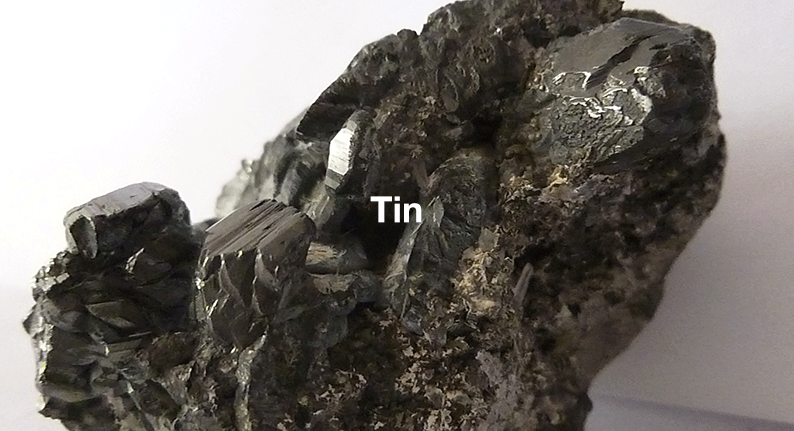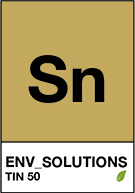Tin Metal Profile
07 Apr, 2020 8:40 AM / by Quek Leng Chuang

Cans and tin soldiers: These are the most common fields of use for this malleable, silvery metal. It’s one of the many metals we recover at Environmental Solutions (Asia). Here is an outline of the origin and applications of this precious metal.
1. Facts and figures
- Chemical name Sn50
- Very low melting point (231,9 degrees celsius only)
- Use started already between 5200 and 5000 b.C.
- Discoverer and year of discovery is unknown
- Tin itself is not toxic but most tin salts and organometallic compounds of tin are
- In earlier times, tin served as a means in order to produce lametta until it was replaced by the cheaper aluminum
2. Natural occurrence and mining

Tin is not a very common element in the earth’s crust, only making up for 2 ppm there. It does not occur as a pure element and is usually extracted from ores. The most common one is Cassiterite, a grey-brown crystalline stone.
In 2017, 290 000 tons of tin in total where mined. 100 000 of those alone come from China, 50 000 from Indonesia and Burma each and 25 500 from Brazil. Reserves of 4 800 000 tons are still estimated to be in the earth’s crust. Those resources are expected not to deplete in the nearer future. Still, recycling is important as the production of tin produces 218 ktons of carbon dioxide per 100 000 tons of tin.
Whilst saving 99% of these carbon dioxide emissions, tin can be infinitely recycled. The recycling rate for tin was at 30% (2016) and continues to rise. We recycle waste containing tin in our facility in Tuas in order to feed back more of this metal into circular economy, saving resources and energy.
3. Applications
In former times, crockery, cans and also the known tin soldiers have been manufactured from tin as the material is malleable and easy to form. Meanwhile, for these applications it has been replaced for cheaper alternatives. Still, less precious kinds of jewelry as well as small decorative objects are made from tin.
Tin today is mainly used for solders (35%), another 30% for the production of tin sheets and 30% for chemical applications such as colorings. During the last years, the use of tin was rising continually and the metal, which is also listed on the metal exchange (e.g. London Metal exchange) increased its price by more than fourfold between 2003 (5000 $) and 2008 (24 000 $). In 2020 however, price was only at 16 000 $, so it is heavily fluctuating.
Historically and still today, tin has been an important metal in order to produce bronze from a mixture with copper. Also, tin connections were used as stabilizers for PVC. Tin even served as a coloring for ships in order to prevent fouling, but is meanwhile not in use anymore due to negative effects on the environment. Moreover, tin is an electrical conductor in LC-displays. Tin dioxide can be used in the realm of optics and as a mild polishing agent, it even serves as an additive for teeth fillings made from amalgam.

4. An Alternative to Mining
Environmental Solutions (Asia) helps companies to turn the cost of managing their waste materials to potential revenue. For more information, please contact us.
Topics: Metal Waste, Reimagining Sustainability
Written by Quek Leng Chuang
LengChuang is a chemical engineer and an expert in carbonomics. He is the founder and owner of Environmental Solutions (Asia) Pte Ltd.
